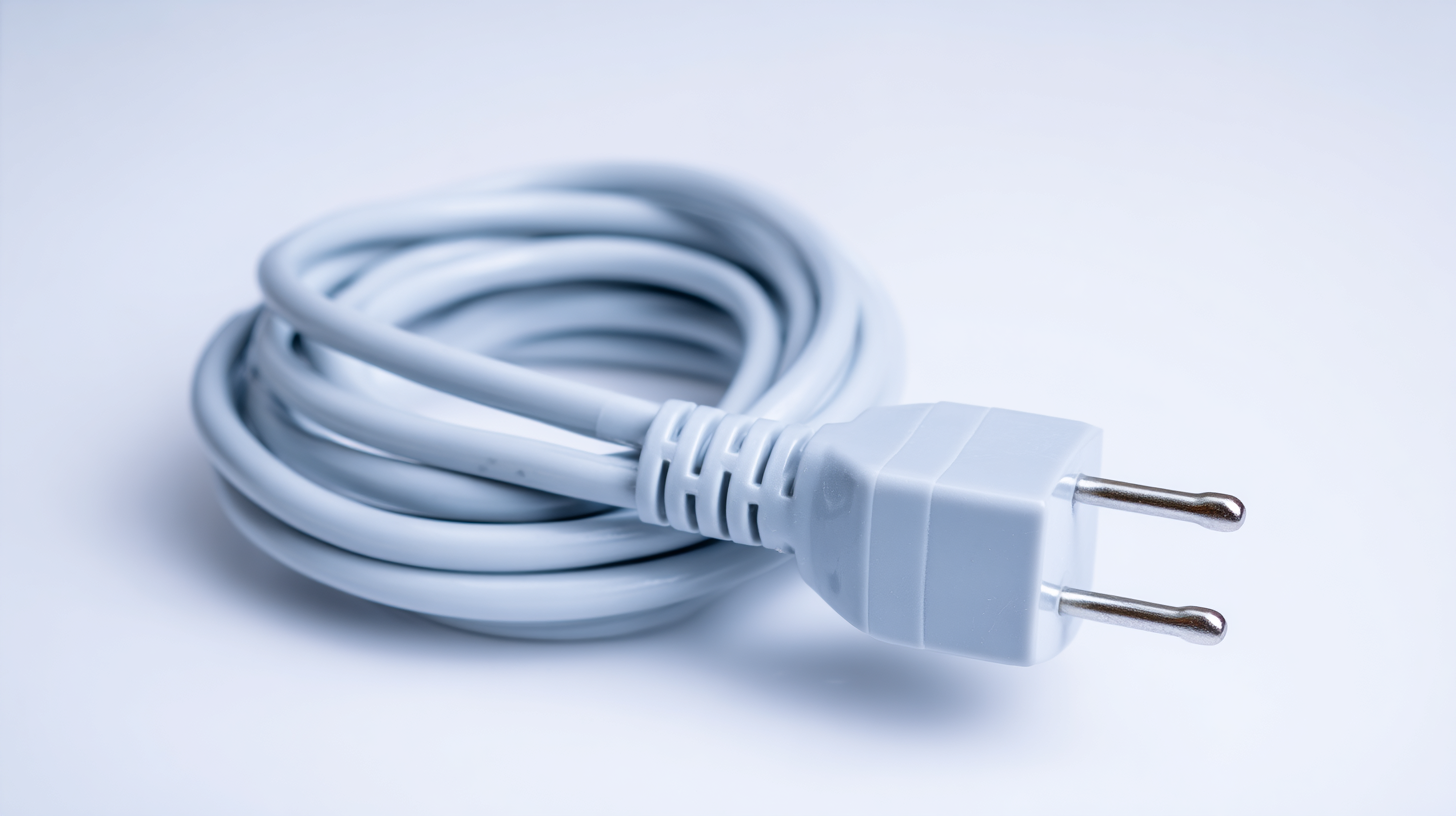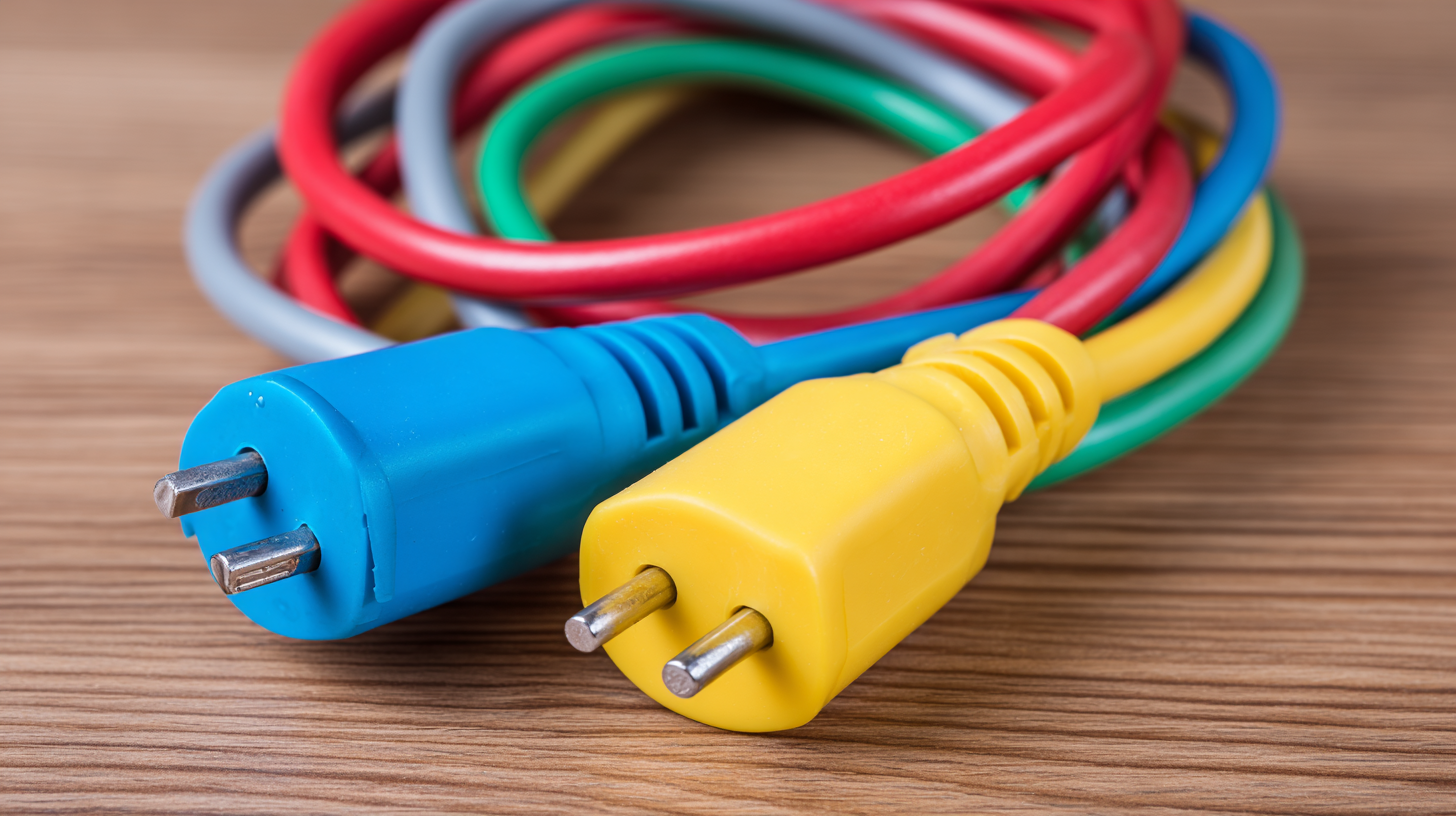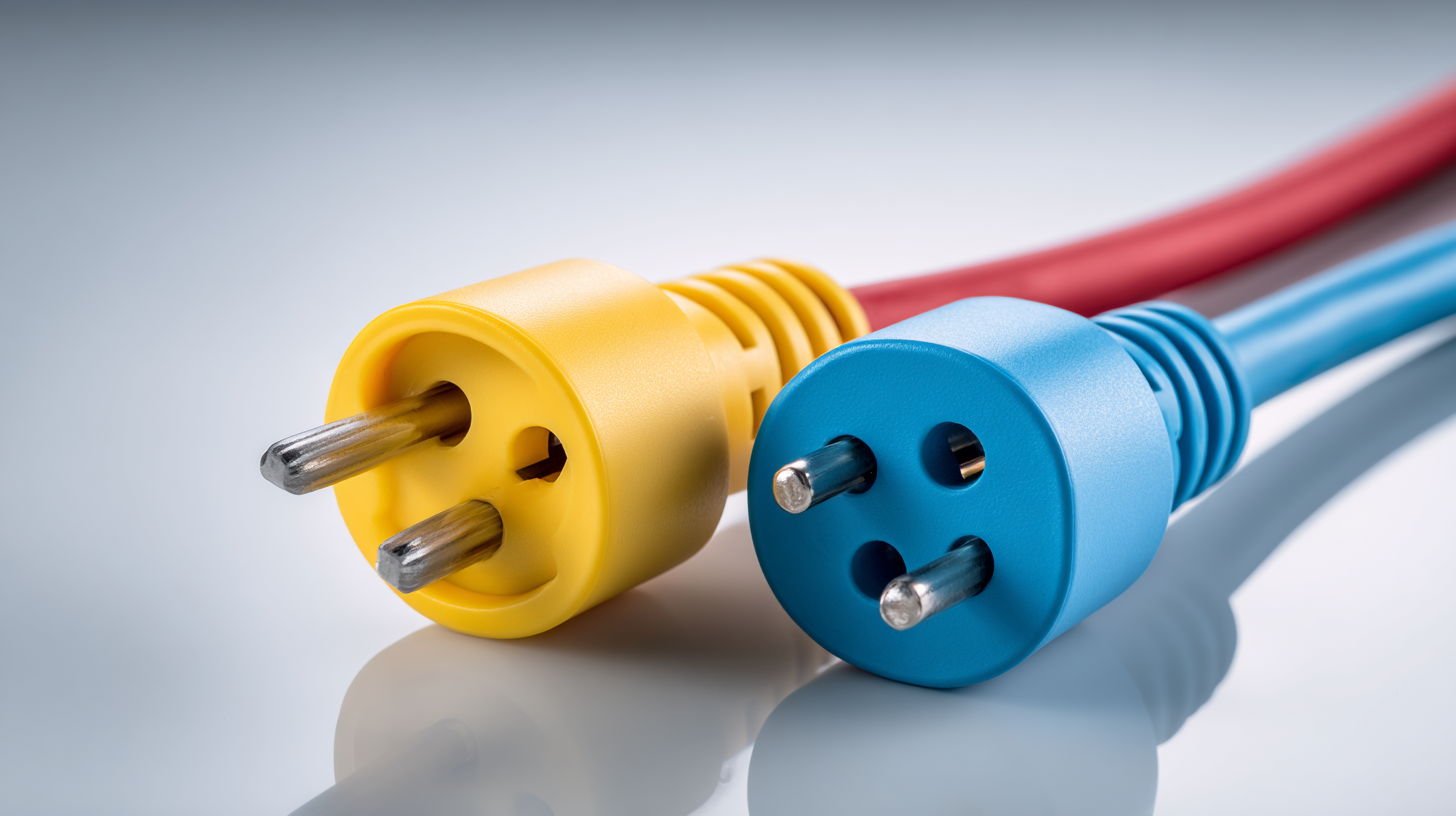Challenges in Utilizing Flat Plug Extension Cords: Insights from Industry Data and Trends
 In the realm of electrical accessories, the
flat plug extension cord has gained significant popularity due to its
space-saving design and convenience. Industry data reveal that the demand for flat plug extension cords has
surged by approximately 25% in recent years, driven by increasing
urbanization and the rise of compact living spaces. However, despite their advantages, users often encounter
challenges that can hinder their effective utilization. For instance, a survey conducted by the
National Electrical Manufacturers Association (NEMA) found that
30% of consumers reported issues related to compatibility with existing outlets,
while another 20% faced safety concerns regarding overloading. As the market
continues to evolve, understanding these challenges is crucial for both manufacturers and consumers in
maximizing the benefits of flat plug extension cords while mitigating potential risks.
In the realm of electrical accessories, the
flat plug extension cord has gained significant popularity due to its
space-saving design and convenience. Industry data reveal that the demand for flat plug extension cords has
surged by approximately 25% in recent years, driven by increasing
urbanization and the rise of compact living spaces. However, despite their advantages, users often encounter
challenges that can hinder their effective utilization. For instance, a survey conducted by the
National Electrical Manufacturers Association (NEMA) found that
30% of consumers reported issues related to compatibility with existing outlets,
while another 20% faced safety concerns regarding overloading. As the market
continues to evolve, understanding these challenges is crucial for both manufacturers and consumers in
maximizing the benefits of flat plug extension cords while mitigating potential risks.
Challenges of Flat Plug Extension Cords in Modern Homes: A Comprehensive Overview
The ingenious design of flat plug extension cords has garnered attention for their space-saving capabilities, making them particularly beneficial in modern home environments. However, despite their practicality, several challenges remain that homeowners should be aware of. One notable issue is the compatibility of flat plugs with existing outlets and furniture arrangements. While they are designed to fit snugly against walls and reduce protrusion, not all outlet placements are optimized for such low-profile plugs, often leading to blocked access to other outlets or inconvenient positioning.
Another challenge highlighted by industry data is durability concerns. Flat plugs may be more prone to wear and tear due to their design, especially when constantly being plugged and unplugged in tight spaces. This can lead to safety hazards if the cords are not properly maintained or replaced as needed. Additionally, there's the issue of power capacity; many flat plug extension cords are designed for light usage, limiting their effectiveness for high-demand devices. Homeowners must be discerning when choosing flat plug extension cords, ensuring they meet the demands of their appliances while addressing spatial constraints effectively.
Challenges in Utilizing Flat Plug Extension Cords: Insights from Industry Data and Trends
| Challenge | Percentage of Users Affected | Common Complaints | Proposed Solutions |
|---|---|---|---|
| Limited Space for Usage | 65% | Difficulty in plugging into tight spaces | Design shorter and flexible cords |
| Heat Build-Up | 45% | Risk of overheating during prolonged use | Use better insulation and heat-resistant materials |
| Incompatibility with Standard Outlets | 30% | Not fitting in older outlet designs | Include adaptable plug designs or converters |
| Durability Issues | 55% | Frequent wear and tear on plugs | Enhance plug materials to resist wear |
| Voltage Drop | 40% | Reduced efficiency in power delivery | Increase wire gauge for better conductivity |
Key Differences: Flat Plug vs. Traditional Extension Cords Explained
When choosing between flat plug extension cords and traditional extension cords, it’s essential to understand the core differences that can impact their usability and safety. Flat plug extension cords are designed to fit snugly against walls or furniture, minimizing the risk of damage or obstruction. This feature not only makes them ideal for tight spaces but also helps reduce tripping hazards, making them a safer option in homes and offices.
However, there are some considerations to keep in mind. Flat plug cords may come with fewer outlets than traditional extension cords, which can be limiting for some users. Additionally, finding flat plug options with surge protection might be challenging.
Tips: When selecting an extension cord, assess your needs carefully. Opt for cords with built-in surge protection for valuable devices. If you’re in a tight space, a flat plug extension cord can be a game-changer, but always ensure you have enough outlets available to meet your power requirements. Regularly inspect extension cords for wear and tear to ensure they remain safe for use.

Safety Concerns: Understanding Risks Associated with Flat Plug Designs
When it comes to flat plug extension cords, safety is a paramount concern that must be addressed to prevent potential hazards. Flat plugs, while designed for convenience and space-saving, present unique risks due to their design and usage. One prominent issue is the tendency for these cords to be inadvertently disconnected, especially when used with heavy appliances. This disconnection not only poses a risk of electric shock but also can lead to overheating and potential fire hazards if the plug is not fully engaged in the outlet.
Furthermore, the flat design can limit the number of outlets that can be utilized simultaneously, leading users to daisy-chain multiple extension cords. This practice increases the risk of overloading circuits and can create fire hazards if the cords are not rated for such usage. Understanding these risks is critical for consumers. It's imperative to utilize flat plug extension cords in compliance with safety guidelines, ensuring they are used in appropriate settings and applications to mitigate potential dangers associated with their design. Manufacturers must also prioritize safety features, such as automatic shut-off technology and robust insulation, to enhance user protection.
Market Trends: Consumer Preferences for Flat Plug Extension Cords
The popularity of flat plug extension cords has surged in recent years, driven by a shift in consumer preferences towards sleek and space-saving solutions. As more homes and offices prioritize aesthetics and organization, flat plug designs offer a seamless way to incorporate necessary power solutions without the bulky presence of traditional cords. This design allows users to plug devices in tight spaces, such as behind furniture or in crowded outlets, making them ideal for modern living environments.

Moreover, manufacturers are responding to market trends by innovating the functionality of flat plug extension cords. With a growing demand for smart home integration, many consumers are now seeking cords that not only serve basic power needs but also come equipped with features like surge protection and USB ports. This alignment of consumer desires with product offerings indicates a clear trend towards multifunctionality and convenience. As these preferences continue to evolve, the industry is increasingly focused on developing extension cords that meet the needs of tech-savvy and style-conscious customers.
Installation Complications: Analyzing Common Issues and Solutions
When it comes to utilizing flat plug extension cords, installation complications are often overlooked, leading to potential safety hazards and inefficiencies. According to a recent report by the National Electrical Manufacturers Association (NEMA), improper installation is cited in approximately 30% of home electrical issues. These complications often arise from using extension cords inappropriately, such as overloading circuits or using cords in ways not intended by manufacturers.
One common installation issue is the challenge of fitting bulky plugs into tight spaces, which can cause strain on both the plug and the outlet. A study published in the IEEE Transactions on Industry Applications revealed that 25% of cord users experienced damage to their equipment due to inadequate spacing and improper alignment. To mitigate these problems, users should prioritize the selection of flat plug cords designed for space-constrained environments, ensuring compatibility with all outlets to maintain safety and functionality. Furthermore, proper cord management practices should be employed, such as avoiding tangled cords and regularly inspecting for wear and tear, to prevent potential hazards associated with extension cord use.